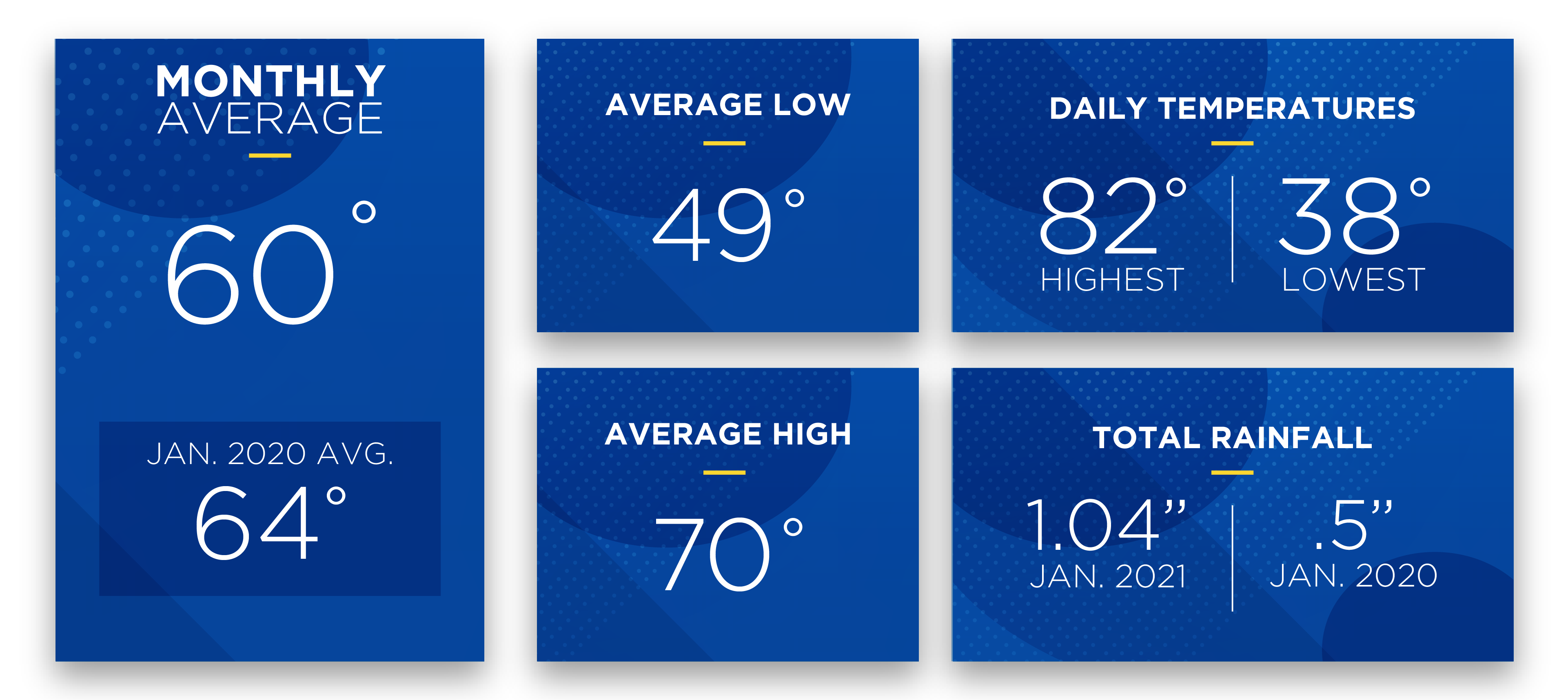January 2021 Sunshine State Stats
January 2021 weather was a mix of hot and cold. Mother Nature kept us guessing with high daily temperatures in the 80s and low daily temps in the 30s. Members may notice an increase in their January electric usage due to heating and cooling needs during the month.
For January 2021 the average temperature was a balmy 60 degrees, which is 4 degrees lower than the average temperature of 64 degrees in January 2020. Four days in the month reached 80 degrees or over, while two days dipped into the 30s. The highest recorded temperature was 82 degrees and the lowest recorded was 38 degrees. The average high temperature was 70 degrees and the average low temperature was 49.
Average rainfall in January is just over 3 inches. January 2021 rainfall was lower than average at only 1.04 inches for the month. In January 2020, rainfall measured less than .5 inches.
Again, members may see an increase in their energy usage for January 2021. Daily temperature fluctuations mean members used their HVACs to cool their homes during the day and for heat after the sun went down. The highest daily temperature fluctuation was 31 degrees.
February forecast:
The February 2021 forecast calls for high temperatures in the low to mid 70s and low temperatures to drop into the high 30s and low 40s. Temperatures may drop into freezing during the first week of the month. The best chance for rain is the first half of the month. Expect morning showers and partly cloudy days.
The Old Farmer’s Almanac predicts above-average temperatures for February with below-average rainfall.
To check historical usage, log into SmartHub to view past bills and consumption charts. If your usage is high, SECO offers several energy-efficiency tools to help you identify energy wasters. Take the Home Energy Assessment to receive a detailed email tailored to your home’s features and lifestyle. The energy-saving advice will provide low-cost ways to decrease your usage – and your electric bill.
To easily calculate how much energy your appliances, lighting, electronic devices, and other energy-using items in your home consume, use the Energy Estimator.







